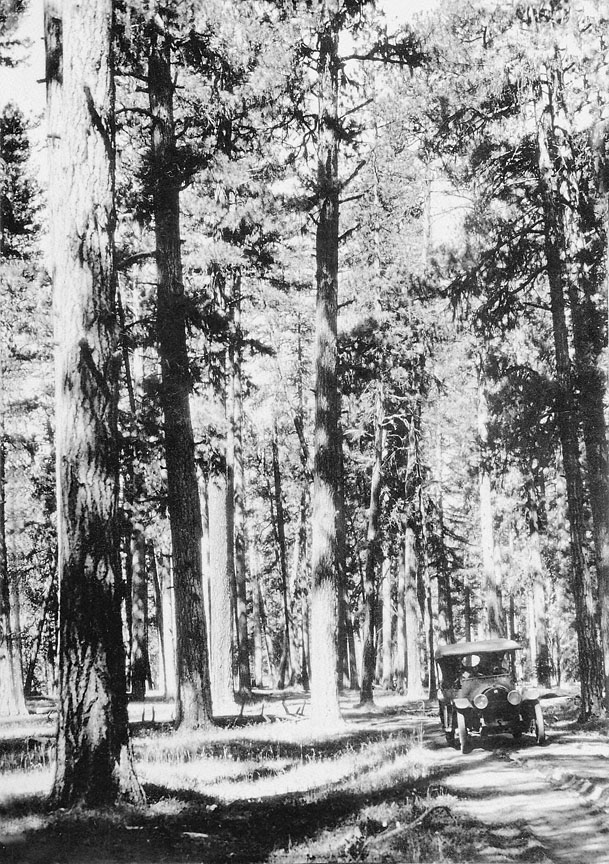- Catalog No. —
- CN 014008
- Date —
- 1931
- Era —
- None
- Themes —
- Environment and Natural Resources
- Credits —
- Oregon Historical Society
- Regions —
- Central
- Author —
- Oregon Journal Collection
Ponderosa Pine, Prineville, 1931
Forest fires are an important component of the ecosystem. The Native population used fire as a tool to enhance the production of food, opening the dense forest to light and providing fertile soil for natural herbs and berries. Both Native burning practices and lightning-caused forest fires created an environment that attracted animals, such as deer and elk, producing fruitful hunting grounds. The automobile driver in the photo above is able to maneuver with ease through this ponderosa pine forest in 1931 because the forest was thinned by fire.
The Lewis and Clark Journals, written from 1804 to 1806, describe Native ecological practices, especially the use and importance of fire. In his journal, explorer and U.S. Army officer John C. Frémont, likewise, mentioned Native forest burning in the 1830s. Hudson’s Bay Company trapper Peter Skene Ogden frequently mentioned forest burning in his journal and correspondence in the 1820s, but believed the fires disturbed the beaver habitat and harmed his ability to gather pelts. When settlers realized that thinner forests attracted game, they began to develop their own burning practices.
Further Reading:
Boyd, Robert, ed. Indians, Fire, and the Land in the Pacific Northwest. Corvallis, Oreg., 1999.
Written by Robert Donnelly, © Oregon Historical Society, 2003.
